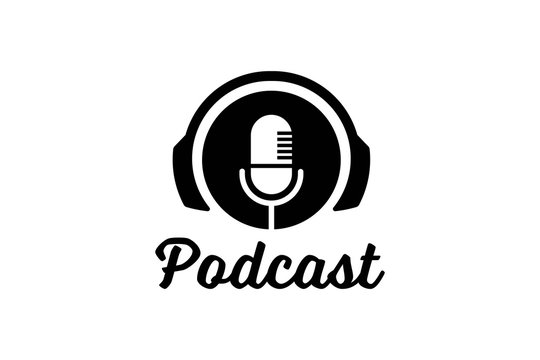About Me
My name is Gabriell Tetaj, and I am currently pursuing a degree in Applied Computer Science with a focus on AI Engineering at Howest University of Applied Sciences in Belgium. I am passionate about artificial intelligence, technology, and the power of continuous learning. My academic journey has been shaped by hands-on projects, international experiences, and a strong interest in real-world applications of IT. I enjoy networking with the global IT community, participating in extracurricular events, and staying up-to-date with the latest trends in technology. I believe in the importance of collaboration, innovation, and making a positive impact through technology.
Tech&meet: Attending an AI Seminar
Event: AI: The Reality Behind the Hype, Bruges, 2024
Speaker: Ir. Wim Delvaux, Engineer in Computer Science
Summary:
the engaging Tech&Meet session “AI: The Reality Behind the Hype” took place, where Ir. Wim Delvaux guided us through the complex and fascinating world of artificial intelligence. In an era where AI is both celebrated and feared, this session offered much-needed clarity and nuance.
AI is everywhere but do we really understand it?
From voice assistants on our phones to advanced algorithms in industry, artificial intelligence has become an integral part of our daily lives. Yet for many, it remains an abstract and often misunderstood concept, surrounded by buzzwords and inflated expectations.
During the session, we explored what AI truly is and what it isn’t. Wim Delvaux, a civil engineer in Computer Science, used his broad experience to deliver a clear explanation of AI’s foundations. What are today’s capabilities of AI models? Where do the limitations lie? And most importantly: how do we separate fact from fiction?
Between innovation and illusion
The presentation went beyond technical insights and addressed the societal impact of AI. How is AI changing our work, our privacy, and the way decisions are made? And how do we avoid blindly trusting algorithms we don’t fully understand?
Delvaux stressed that AI is not a magic box that solves all our problems, but a powerful tool that – when used wisely – can provide tremendous value. However, that requires realism, critical thinking, and transparency about the data and models behind the scenes.
From hype to insight
What made this Tech&Meet so valuable was its ability to cut through the noise of media and marketing. Attendees left with a clearer understanding of what AI can and cannot do – and why it's so important for society to stay informed.
With speakers like Ir. Wim Delvaux, who combines deep technical expertise with a broad societal perspective, the Tech&Meet series proves to be an ideal platform for staying up to date with rapidly evolving technology – without getting lost in the hype.
Cracking Codes in Antwerp – My Capture the Flag Hackathon Story
Event: Antwerp Hackathon 2024
Challenge: Get the most points doing different challenges
Summary: In November 2024, I had the chance to take part in a thrilling Capture the Flag (CTF) hackathon in the heart of Antwerp – an event that brought together 20 teams of tech-minded students, developers, and cybersecurity fans for a day packed with challenges, code, and adrenaline.
The format was simple but intense: solve as many security and coding puzzles as possible within the given time. Each challenge earned your team a "flag" – and the more flags you captured, the higher you climbed on the leaderboard. The twist? Every challenge required quick thinking, solid programming skills, and a good dose of creativity.
I teamed up with another student, and together we faced a wide mix of tasks involving JavaScript, .NET, code analysis, reverse engineering, and vulnerability detection. While we had different strengths, we quickly found our rhythm — dividing tasks when it made sense and teaming up when things got tough. Some challenges had us sweating over obscure bugs or cryptic clues, but solving them was incredibly satisfying.
What stood out to me the most was the atmosphere: competitive, yes, but also collaborative and energetic. Everyone was there to learn, push boundaries, and have fun. Finishing in the top ranks (we placed 2nd!) was the cherry on top, but the biggest win was everything I learned under pressure — from faster debugging strategies to thinking like an attacker when spotting security flaws.
This hackathon reminded me how exciting tech can be when theory meets real-world problems. I walked away more confident, more curious, and already looking forward to the next challenge.
Behind the Scenes of Google-Scale Reliability
Event: Tech&Meet: Google SRE
Summary: I recently attended a captivating lecture by engineers from Google’s Site Reliability Engineering (SRE) team, and it completely changed the way I think about building and maintaining software systems. The session pulled back the curtain on how Google keeps its massive infrastructure—supporting services like Gmail, YouTube, and Search—reliable at a global scale.
One of the most eye-opening ideas was the concept of error budgets. Instead of obsessing over achieving perfect uptime, Google sets realistic reliability targets (like 99.9%) and uses the "allowed" margin for innovation. That balance between stability and speed lets teams release new features without compromising user trust. It’s a smart, pragmatic approach that turns reliability into something measurable and manageable.
The talk also dove into the everyday tools and habits of SREs: constant monitoring, fast incident response, and a culture of blameless post-mortems when things go wrong. It was clear that automation, data-driven decision-making, and close collaboration between developers and ops aren't just buzzwords — they’re core to how Google operates.
What stuck with me most is how these ideas scale down, too. You don’t need Google-sized traffic to benefit from SRE thinking. Whether you're working on a school project, a startup app, or an internal tool, adopting even a few of these practices—like better logging, alerting, or learning from failures—can make a huge difference.
This lecture didn’t just teach me about infrastructure; it made me rethink what reliability means in software and how I can build systems that people can truly depend on.
How I Built This Website
Platform: WordPress
Template: Free academic portfolio theme
Hosting: Github Pages
Customization: I started by selecting a clean, responsive template suitable for professional portfolios.
I customized the layout, colors, and fonts to match my personal brand.
Hosting via Github Pages provided reliable performance, security and a simple way to deploy my website.
Overall, building this site was straightforward and a great learning experience in web development and content management.
Project Biokub: A Composting System
Project: Biokub: A Composting System
Role: IT and AI Developer
Summary: Earlier this year, I had the opportunity to work on an exciting international project in Borås, Sweden, as part of my studies. The project was in collaboration with Biokub, a Swedish company focused on sustainable waste processing and composting. It was a unique chance to combine software development with real-world environmental impact.
Our goal was to help Biokub take the next step in digitalizing their operations. As part of a small team, I worked on both the development of a modern website for the company and a custom-built IoT solution using Arduino. The hardware we created measures key environmental factors—such as temperature, humidity, and gas levels—in their composting containers. These readings can help Biokub monitor and optimize their compost process more efficiently.
What made this project truly special was the hands-on experience. We didn’t just write code—we visited the Biokub site, tested sensors in real conditions, and adapted our approach based on real feedback from the team on the ground. The combination of engineering, sustainability, and cultural exchange made this more than just a school assignment; it felt like real innovation with purpose.
Working in Sweden also gave me insight into how other countries approach green technology and sustainability. The collaborative spirit, professional feedback, and international context made this one of the most valuable experiences of my academic journey so far.
AI in Practice: A PHD Student's Perspective
Role: Co-Host
Speaker: Prasanna Balasuriya
Summary:Recently, I had the chance to co-host a podcast episode alongside Kenrick Gevers, where we sat down with Prasanna Balasuriya, a PhD student from Sweden specializing in Computer Science. The conversation opened up new perspectives on how artificial intelligence is moving from theory into practical use within modern businesses, schools.
The episode revolved around real-world implementation how companies are using AI today, what obstacles they encounter, and what it takes to get it right. Prasanna shared how his academic work aims to bridge the gap between complex AI research and tools that are actually usable in everyday workflows.
One of the biggest takeaways for me was how accessibility and ethics are becoming just as important as technical performance in AI development. Companies are no longer asking, “Can we use AI?”—they’re asking, “Should we? And how do we do it responsibly?”
Co-hosting this discussion helped sharpen my ability to communicate complex ideas clearly, while also deepening my understanding of where AI is heading. It’s clear that collaboration between researchers and practitioners is key to unlocking AI’s full potential.
Whether you’re an engineer, manager, or student, this episode offered valuable insights into what it really takes to turn AI from an idea into impact.



